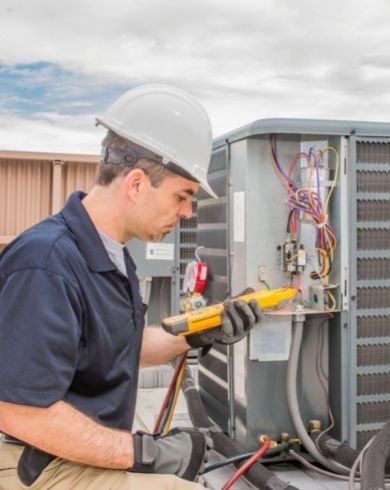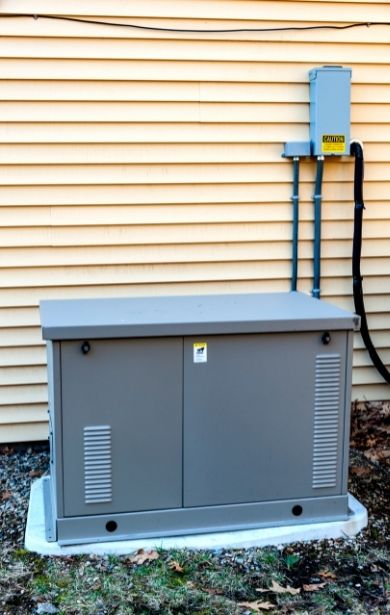

Home & Business electrical maitenance
What Does Electrical Maintenance Include?
Electrical maintenance is the simplest technique to prevent expensive power breakdowns. Regular inspections and repairs of the electrical systems in residential and commercial buildings constitute electrical maintenance.
The electrician performs a number of duties and examines a number of systems, including:
✓ Examination of the power outlets
✓ The electrical connections are examined
✓ Cooling systems
✓ Electronic and mechanical devices
✓ Circuit breakers and the electrical panel
✓ Keeping track of electrical damage
The electrician will inspect each part of the electrical system in your house or place of business to make sure everything is operating as it should. The maintenance is typically preventive, making sure there are no problems. During the routine maintenance, the electrician will fix any damages if there are any.
Common Electrical Maintenance Techniques
Most of the time, our Albion Electrical electrician arrives to check on the equipment and system’s electrical status. On occasion, they will carry out preventative maintenance and make repairs in accordance with the state of the system.
- A part of preventive maintenance is testing your system’s electrical components. Here, the electrician will check a variety of things, including the battery charge, the circuit breaker, and the relay. To make sure the system is operating efficiently, this is done. Predictive maintenance entails inspecting system components that are likely to malfunction soon. Here, the electrician runs tests including infrared inspections, temperature analyses, and evaluations of the system’s emissivity and reflectivity.
- Failure detecting maintenance is the following strategy. The electrician will look for any defects that could jeopardise the electrical system’s safety here. The backup generator and other systems will be tested by the electrician to make sure they are prepared in case of a blackout.
- Corrective maintenance addresses any unforeseen malfunctions that may occur. The system will be fixed by the electrician so it can start up again.
A routine is followed by the electrician when performing time-based maintenance to repair or refresh a component. For instance, the electrician may decide to change the filter every four months when inspecting the HVAC system. After the fourth month, the electrician will replace the filter regardless of its state in order to restore the system’s dependability and performance. - The state of your electrical system will determine the sort of electrical maintenance the electrician selects.
- The electrician evaluates the system and its resources before deciding how to maintain it. This entails determining which equipment has a history of problems and which are priorities. The electrician will go over a building’s electrical schematics once a year.
- The electrician will identify the assets where failures are avoidable after inspecting all the assets. The electrician will identify failure modes, or which assets malfunction randomly and which ones do so in a predictable way, for those assets where failures cannot be prevented. The electrician can then produce a status report at this point that they will use for subsequent maintenance.
Call Albion Electrical Today
At Albion Electrical, we provide the installation of electrical systems and equipment as well as the repair and normal maintenance of these components. You can get in touch with us for services like lighting installation, surge protection, smoke detector installation and repair, and generator installation and maintenance, among others.
Which Electrical Components Does the Electrician Check?
Lighting Maintenance
When you want to increase energy efficiency, reduce costs, and improve light reliability, lighting maintenance is excellent. The electrician will test the lighting system and make modifications to reduce future failures. In order to improve the efficiency of your lights, the electrician could also suggest replacements.
Any burned-out lights will be replaced first by the electrician. Although it should go without saying, it is crucial that an electrician replaces the group when a light goes out. By doing this, the likelihood of future lighting problems is reduced and the lights operate more effectively at all times.
The electrician then examines the lighting cables. This is done to protect the cables from the elements and to ensure that they are not damaged. The minor components, such as the sealant on outdoor light fixtures, will be examined by the electrician.
Redirecting adjustable lights that may have moved as a result of environmental factors, wear and tear, or human tampering is another aspect of maintenance. In addition, we dust and clean the lighting systems. Finally, we examine the charge and condition of any battery-operated lighting systems.

Your HVAC
One of your home’s main electrical systems is the HVAC. The electrician must make sure that all of the electrical connections to the HVAC components are in excellent working order.
The electrician can make sure your electrical system can handle the energy demand during the summer or winter when there is a significant need for cooling and heating, even though they might not be able to fix the system. The HVAC specialist and the electrician can collaborate to make sure the system is functioning properly.
The complete electrical system in your home will typically be checked, repaired, cleaned, and tuned-up by the electrician. The first step is to confirm that your home’s electrical connections are secure in accordance with NFPA 70E and OSHA regulations. The next stage is to make sure the system is operating at its best and that there is no imminent danger of electrical problems. The system must also be cleaned as necessary, and the oil, coolant, and batteries must be examined.
Electrical Safety Maintenance
Maintenance on electrical safety is the process of taking safeguards to eliminate risks. The electrician makes sure there are no electrical risks or accidents by performing regular electrical maintenance. The electrician makes sure that your electrical system complies with NFPA 70E and OSHA requirements for electrical safety when performing electrical maintenance.
The overhead electricity cables are checked initially by the electrician. The distance between these lines and the ground and other pieces of equipment should be at least ten feet. The electrician then inspects electrical tools and equipment to make sure that wires, cords, and cables are free of cracks, abrasions, and cuts. In the event that any of this equipment has flaws, the electrician makes the appropriate repairs.
After that, the electrician looks for exposed electrical components including insulation that has come off of cords, power distribution boxes, and lighting. The electrician replaces any wires that are the wrong size in the electrical system. Other elements examined are:
✓ Improper grounding
✓ Blown fuses
✓ Damaged insulation
✓ Wet conditions
✓Connections of various electrical components
Generator
In the event of a power outage, you must make sure your backup generator is prepared to function. The electrician tests the generator as part of routine maintenance to make sure it is working properly. The electrician will monitor the sound the generator makes while it runs to make sure everything is operating as it should.
The automated transfer switch’s functionality is also examined by the electrician. This can be done by turning off the main power line and watching the generator’s on and off cycles.
The electrician searches for leaks while testing the generator. The electrician cleans the generator after the initial inspection. The electrician checks the oil and coolant levels each month when maintaining the generator. Oil is necessary for an engine to run smoothly and without friction. The engine’s coolant prevents overheating.
The battery has to be checked next so that the standby generator can start when needed. For fluid batteries, electricians examine the connection, the wiring, and the level of water. The electrician also examines the fuel systems, air filters, air cleaning devices, exhaust system, and generator wiring. The spark plugs, oil, and coolant will all be changed by the electrician once a year.

